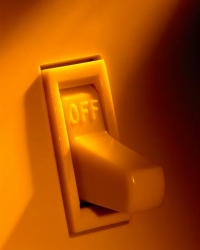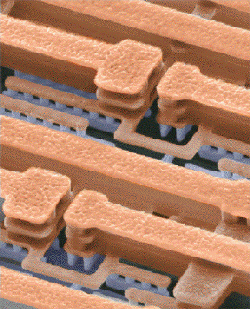 Ever wonder how a computer works?
Ever wonder how a computer works?
If you were to take apart your computer and look inside there would be a lot of electronic parts including something called a microprocessor or as it’s commonly called, a chip. Inside of that chip are lots and lots of little switches called transistors.
How many transistors?
In the most modern chips there are about one-hundred million switches. That is about as many light switches as there are in all of the building in the city of San Francisco.
To make computers faster and faster, scientists and engineers have had to make the transistors smaller and small. So small now that your average transistor is about 100 nanometers, which means you could fit 1,000 of them across the width of a human hair. the first transistor made in 1947 was about two inches across. Now a days these tiny transistors are made using nanotechnology.
 Why do the transistors need to be so small?
Why do the transistors need to be so small?
Tiny transistors make it possible for you to carry around a laptop computer that is more powerful than computers that 10 years ago weighed a few hundred pounds. Also they run faster because even though electrons move very fast they still take time to go from one place to another! So the shorter the distance that they have to travel the better. And also these tiny transistors use very little energy and so laptop computers run longer on batteries.
To keep making transistors smaller and smaller, we are going to have to come up with new ways of making them. Scientists predict that the smallest transistors they can make using current technology is about one-third the size of the current ones. So figure that in about 10 years we will need some new technologies. So what is next? Something called bottom up fabrication.
